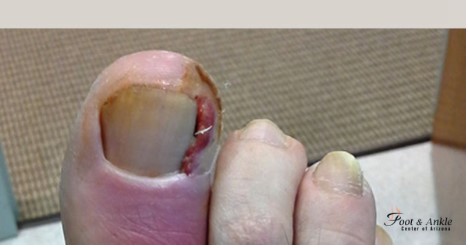Ignoring pus under the toenail might seem like a minor issue, but it can lead to serious complications if left untreated. This condition, often resulting from an infection, can be a source of significant discomfort and pose health risks if not addressed promptly. Understanding the potential risks associated with neglecting this issue is crucial for maintaining good foot health.
Causes of Pus Under the Toenail
Pus under the toenail is typically the result of an infection, which can stem from various causes. One common cause is an ingrown toenail, where the toenail grows into the surrounding skin, creating a painful and inflamed area. Bacterial infections, such as those caused by Staphylococcus or Streptococcus bacteria, can also lead to the accumulation of pus. Additionally, trauma to the toenail, such as stubbing your toe or dropping something heavy on it, can create an environment where bacteria can thrive, leading to pus formation.
Symptoms and Initial Response
If you notice pus under your toenail, it’s important to recognize the symptoms early. Common signs include swelling, redness, and pain in the affected area. In severe cases, the pus may cause a noticeable bulge under the toenail. You might also experience fever or an overall feeling of being unwell, which can indicate a more serious infection. If you experience these symptoms, it’s essential to avoid waiting for the problem to resolve on its own.
Risks of Ignoring the Condition
- Worsening Infection: Ignoring pus under the toenail can lead to the spread of the infection. Bacteria can multiply and spread to surrounding tissues, resulting in a more severe infection known as cellulitis. In some cases, the infection can enter the bloodstream, leading to a systemic infection that requires immediate medical attention.
- Chronic Pain and Discomfort: Without treatment, the infection can cause persistent pain and discomfort. This can affect your ability to walk or perform daily activities, leading to a reduced quality of life.
- Nail Damage: Prolonged pus accumulation can damage the toenail and the nail bed. This damage might result in permanent changes to the nail’s appearance or growth. In severe cases, it could even lead to the loss of the toenail.
- Complications for Individuals with Pre-existing Conditions: For people with diabetes or compromised immune systems, an untreated toenail infection poses additional risks. These individuals are more susceptible to severe infections and complications, which can lead to more serious health issues, including ulcers or gangrene.
- Potential for Systemic Infection: Infections that start in the toenail can spread to other parts of the body. This can be particularly dangerous for those with weakened immune systems or chronic health conditions, as it can lead to more serious systemic infections.
How to Manage and Treat Pus Under the Toenail
If you suspect you have pus under your toenail, it’s important to seek medical attention as soon as possible. A healthcare professional can accurately diagnose the issue and provide appropriate treatment. Common treatments may include:
- Antibiotics: Oral or topical antibiotics may be prescribed to combat bacterial infections.
- Drainage: In some cases, a healthcare provider might need to drain the pus to alleviate pressure and reduce the infection.
- Proper Foot Care: Keeping the affected area clean and dry, and avoiding tight or ill-fitting shoes, can help promote healing and prevent further complications.
Pus Under Toenail
When dealing with pus under toenail, immediate and appropriate treatment is essential to prevent complications. Proper care involves not only addressing the pus itself but also understanding and mitigating the underlying cause of the infection. Whether it’s an ingrown toenail, trauma, or another issue, timely intervention can make a significant difference in the outcome.
Ignoring the symptoms and neglecting to seek treatment can lead to increased pain, risk of spreading infection, and potential long-term damage to the toenail and surrounding tissues. It is crucial to monitor your condition and consult a healthcare professional if you notice any signs of infection or pus under the toenail.
Conclusion
Addressing pus under the toenail promptly is essential to prevent severe complications. Whether caused by an ingrown toenail or another underlying issue, seeking professional toenail treatment in Scottsdale AZ can help manage the condition effectively. By recognizing the symptoms early and obtaining appropriate care, you can avoid the risks associated with neglecting this issue and maintain better foot health overall.




